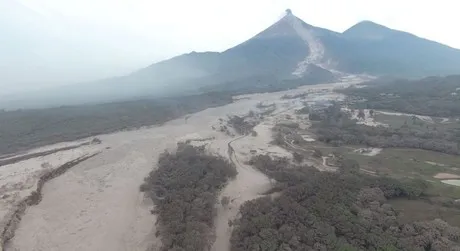A third of the way through the year, summer is about to hit 2018 and this is where things are about to get a little wilder. Before we get to that time, we still have May and June, which brought us even more avocado news. The lemon and banana markets also poked their heads out, however, so lots and lots to reminisce about.
The first tropical storm of the season, Alberto, made landfall at the end of May. It caused some damage to vegetable crops in the far west of Florida. The watermelon production was impacted significantly.
2018 - the year of the avocado
A scary start for the avocados, as a shipment of Mexican avocados could not enter Costa Rica when it departed without the required certificates. New technology reached the market in the form of an avocado quality meter. Chile wanted access to the Australian avocado market, but Australia demanded the quality of those avocados to be up to their standards, which makes it hard with sea freight. Mexico also seemed to be flirting with Australia and New Zealand to export their avocados. Thanks to bigger volumes of avocados every year, people were expecting a big clash in June, accompanied by a dip in prices.

Meanwhile in China, Mr. Avocado invested in Chinese domestic avocado production. The company was working closely with Mission Produce and Pagoda. Avocados from Chile were suffering from one of the driest months of May, putting the harvest 25 days behind schedule. When saving your avocado for later, one must face a number of challenges. A Canadian solved this problem by creating the Avocado Sock. Not enough avocado news for you? An overview of the global avocado market was also released, for a lot more details on the different regions in the world.
When life gives you lemons...
The lemons from Argentina had a bit of a celebration this year, as for the first time in 15 years, the lemons entered the United States. It took them a while to get there, but eventually the first shipment was cleared by US customs. Californian lemon growers welcomed smaller sizes of the organic lemons, as big sizes started to become a problem. A South African exporter, who has been involved in the country’s citrus industry for 20 years, was optimistic in terms of growing lemon volumes. The citrus season overall had a less than ideal start, but the same couldn’t be said about the lemons, as they were developing relatively well. For a more detailed overview of the lemon market, an overview of the global lemon market was published during this period as well.

In Guatemala the Fuego volcano erupted, expelling 8 kilometers of lava and a thick column of black smoke and ash that rained down on the capital of the country. Although the priority lay with rescuing people, crops were also heavily damaged.
The market is going bananas
Great things were expected from the banana market this year, starting with big expectations of the Mexican bananas in the Canadian market. The worldwide market for bananas seemed quite poor though, starting with very low production and very high prices. Before too long, the prices dropped quickly as big volumes became available from all the banana producing countries. For example; the Polish banana prices dropped by 50 per cent over a course of just four weeks. This also had to do with the early start of summer fruits this year, which led to less demand for bananas. A more detailed report of the global banana market can be found in the overview of the global banana market.

Government management
Governments of several countries had to interfere with the agricultural sector. For starters, China started detaining all US fruit upon arrival for seven days. China used to check around 30% of incoming shipments from America, but this has been increased to 100%. India was looking for progress by signing trade deals with eight countries, including the United States and Canada. The deals were meant to liberalize trade in farm products and grow its farm exports. The Asian market was looking for European produce, as they regarded it safer than the local products. Fruit exports in Argentina were halted due to a trade union conflict, which resulted in huge losses for the sector. The trade union assembly decided not to accept any agreement if the ten people that were laid off by the health agency were not reinstated. And so the strike would continue.
The US romaine lettuce farmers were frustrated by the response of the government, regarding the E. coli outbreak. The CDC stated that the risk of new E. coli infections was low, but the number of cases would rise. At that point 149 people in 29 states became sick, one person had died. America had imposed anti-dumping duties on the stainless steel flanges imported from China and India. India’s response was to institute retaliatory tariffs on a number of US imports, including fresh products such as apples. Another strike in South America brought Brazil to a standstill. A nationwide trucker’s strike led to airports and gas stations running out of fuel, spiraling food prices and a halt on movement of goods in general. Australia needed a long term strategy for fighting the Panama TR4 disease, and so a control and containment management plan was developed. Meanwhile their neighbors in New Zealand were dealing with the Psa outbreak. A kiwi grower was looking for reimbursement of damages, while the defending MPI argued there was no duty of care between the MPI and the growers.
